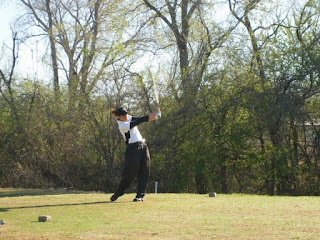Play Based What and Where Questions
There is a patient that I have been working with for over a year. Though we have made tremendous progress within this year we are at a point of being "stuck." This particular patient has great difficulty with answering basic "what" and "where" questions that are beyond pointing to an item and saying "what is that?" or asking "where did the teddy bear go?"
It was time to push the patient into answering more complex forms of "wh" questions such as "what does a dog like to chew on?" After going for months of asking these basic questions and no progress I backed up my expectations and turned these "wh" questions into a receptive language task. I did this by asking the question with three pictures available for the patient to choose the right answer. For example I would ask "where do you sleep?" the following pictures would include 1. a bed, 2. a cow, and 3. a chair. The patient would then choose the bed and he would sometimes say the identified item independently.
So we have been doing these activities for awhile without a lot of progress. Last week I had a new idea for the patient and I thought I would share. As you can see from the pictures below I took a bucket full of beans and corn and I filled it up with three sets of figurines (cars/trucks, things that fly, and people). My patient cancelled so I didn't have the chance to try it out with him but my goal was for the patient to come over and request to have the box opened, then the patient would pick out one of the figurines. I would then ask various "wh" question forms such as "where does he live?" or "where does the car drive?" In the pictures below I have a little house and a mat that has streets on it. I was also going to work in a pediatric treatment room with a blackboard and draw clouds on it to represent the sky. With these different "places" the patient then gets to interact with the figurine at the correct location.
I thought this activity would be a fun variance from sitting at the table and just looking at pictures. I also find that doing a more interactive activity such as thing promotes more creative play and verbal expression. What do you all do when you have a patient that has a hard time moving past the basic "what" and "where" questions? I hope this idea works for my patient and I hope it works for some of you as well! I know that I'm pretty excited to try it out with him!
It was time to push the patient into answering more complex forms of "wh" questions such as "what does a dog like to chew on?" After going for months of asking these basic questions and no progress I backed up my expectations and turned these "wh" questions into a receptive language task. I did this by asking the question with three pictures available for the patient to choose the right answer. For example I would ask "where do you sleep?" the following pictures would include 1. a bed, 2. a cow, and 3. a chair. The patient would then choose the bed and he would sometimes say the identified item independently.
So we have been doing these activities for awhile without a lot of progress. Last week I had a new idea for the patient and I thought I would share. As you can see from the pictures below I took a bucket full of beans and corn and I filled it up with three sets of figurines (cars/trucks, things that fly, and people). My patient cancelled so I didn't have the chance to try it out with him but my goal was for the patient to come over and request to have the box opened, then the patient would pick out one of the figurines. I would then ask various "wh" question forms such as "where does he live?" or "where does the car drive?" In the pictures below I have a little house and a mat that has streets on it. I was also going to work in a pediatric treatment room with a blackboard and draw clouds on it to represent the sky. With these different "places" the patient then gets to interact with the figurine at the correct location.
I thought this activity would be a fun variance from sitting at the table and just looking at pictures. I also find that doing a more interactive activity such as thing promotes more creative play and verbal expression. What do you all do when you have a patient that has a hard time moving past the basic "what" and "where" questions? I hope this idea works for my patient and I hope it works for some of you as well! I know that I'm pretty excited to try it out with him!








Primus Pediatric Services provides care from infancy through adolescence, including a full range of services for your child in illness and injury.
ReplyDeletehttp://www.primushospital.com/pediatrics.html
Pediatric Clinic in Delhi